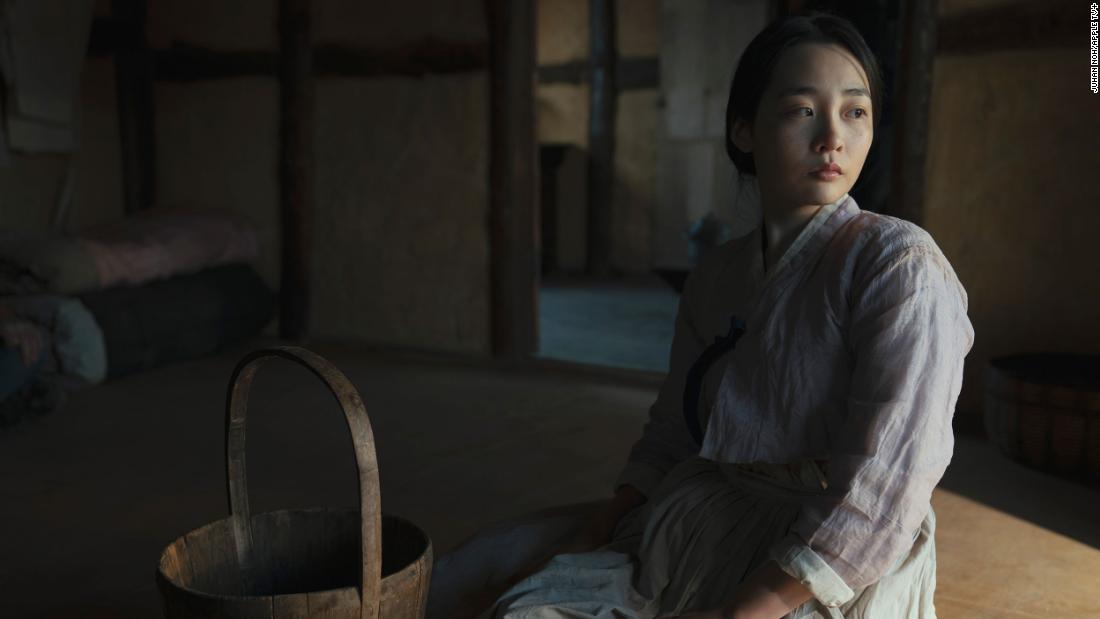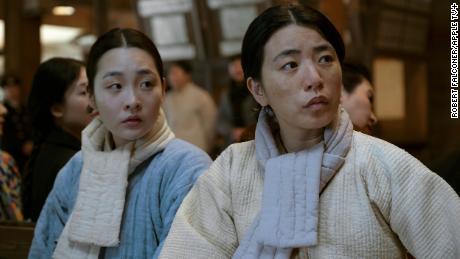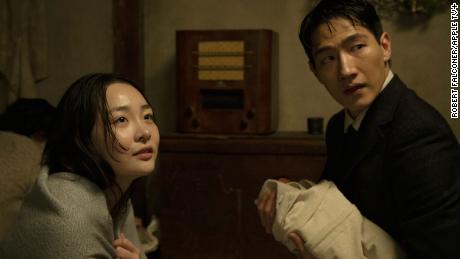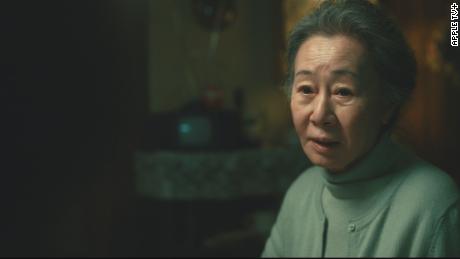
It’s a sweeping tale of immigrant resilience, of identity and belonging, of historical trauma that echoes through generations. But though its themes are universal, “Pachinko” is rooted in a specific history, a critical chapter of which is at risk of vanishing.
That reality makes the final minutes of the season especially remarkable.
The eight-episode season, which chronicles how Japanese colonialism shapes the lives of Sunja and her descendants, ends with documentary footage of real-life Sunjas — Korean women who moved to Japan between 1910 and 1945 and remained there after World War II. The resulting interviews with these first-generation women offer a glimpse into that period not found in history books.
“This was a group of people whose stories weren’t considered important enough to record or tape,” showrunner Soo Hugh recently told CNN. “There’s not that much photographic evidence, especially from that first generation. That told me that this was a story worth telling.”
The eight women briefly profiled at the end of “Pachinko” are almost all more than 90 years old — one has surpassed 100. They faced countless hardships and systemic discrimination in the country they now call home but, as the season’s closing sequence says, they endured. Yet, Hugh said, many of them had been made to feel that their lives weren’t noteworthy.
Afraid that the women’s stories might be lost to time, Hugh felt an urge to include their voices in the series. She wanted to honor their experiences for the world to see.
‘Pachinko’ captures a painful history
“Pachinko” protagonist Sunja leaves her village in Korea in the 1930s for Japan after unforeseen circumstances lead her to marry a man bound for Osaka. When she arrives, she discovers that life for Koreans in Japan is largely one of struggle and sacrifice.
For many Koreans of that generation, Sunja’s experience is a familiar one.
“I came here at 11 and started working at 13,” Chu Nam-Sun, one of the Korean women interviewed for the series, says in the documentary footage. “I grew up in sadness. So it’s hard for me to be kind to other people. I do wonder if that’s because of how I grew up.”
When she started interviewing first-generation Zainichi women 25 years ago, she realized she was learning about a history that was rarely written about: What everyday women did to survive.
“They were really painting a canvas of migrant life and everyday struggles,” said Kim-Wachutka, whose book “Hidden Treasures: Lives of First-Generation Korean Women in Japan” became required reading for the “Pachinko” writers room. “And their everyday struggles were not only about their home. The majority of the women worked outside of the home.”
Just as Sunja sells kimchi at the markets to keep her family afloat, the women Kim-Wachutka met through her research went to great lengths during Japan’s colonial period to make a living. They resorted to brewing bootleg alcohol and journeyed to the countryside for rice they could sell on the black market. Whatever skills they had were put to use.
“In all of these women’s stories, I see so much of Sunja in ‘Pachinko,'” she said.
So when Hugh came to her with the idea to interview some of these women for the adaptation, Kim-Wachutka gladly agreed. It was important to her that viewers see the parallels between the show’s characters and real people who lived that history.
Women like Sunja struggled and survived
Despite Japan’s hostile treatment of Korean migrants, Sunja stays in the country even after its rule over Korea ends.
For successive generations of Sunja’s family, including the series’ other central character Solomon, Japan is home — even though they are often made to question whether they truly belong.
While the majority of Koreans in Japan returned to their homeland after World War II, the women that Kim-Wachutka interviews at the end of “Pachinko” are among the estimated 600,000 Koreans who stayed.
“I can’t go to Korea,” Chu Nam-Sun tells Kim-Wachutka in a mix of Japanese and Korean. “I can’t go to my country, so this is my hometown now.”
“I don’t like saying this, but my children couldn’t live in Korea,” Kang Bun-Do, 93 at the time of her interview, says. “So I made sure they assimilated into Japanese society.”
Life for the first-generation women interviewed at the end of “Pachinko” has been marked by struggle, but that isn’t all that defines them. Ri Chang-Won alludes to how proud she is of her son and her grandchildren. Chu Nam-Sun is shown flipping through a photo album, marveling at how long ago those memories seem. Still, she hasn’t looked back.
“There were no hardships for me in the life I chose for myself,” she adds. “I made my own way, my own path, so I have no regrets whatsoever about the path I chose and walked down.”
Their accounts help us reckon with the past and present
In sharing these stories with the world, Hugh said she wanted to ensure that the women had agency and that they didn’t feel that they were being used for the show. And in the end, she said, many of them described the experience of being interviewed as a form of healing.
A particularly revealing moment comes at the end of the footage, when Kim-Wachutka comments on Ri Chang-Won’s bright smile. Ri doubles over laughing, as if astonished to receive such a compliment. When she finally regains her composure, she speaks once more.
“I’m sure it must have been boring, but thank you for listening,” she says of her story.
The stories of first-generation Zainichi women, much like the Sunja’s journey in “Pachinko,” open up important conversations around race, oppression and reconciliation — not just as it relates to Koreans in Japan but in communities all over the world, Kim-Wachutka said. Listening to their stories, she said, can help us reckon with the injustices of the past, and perhaps avoid repeating them.


